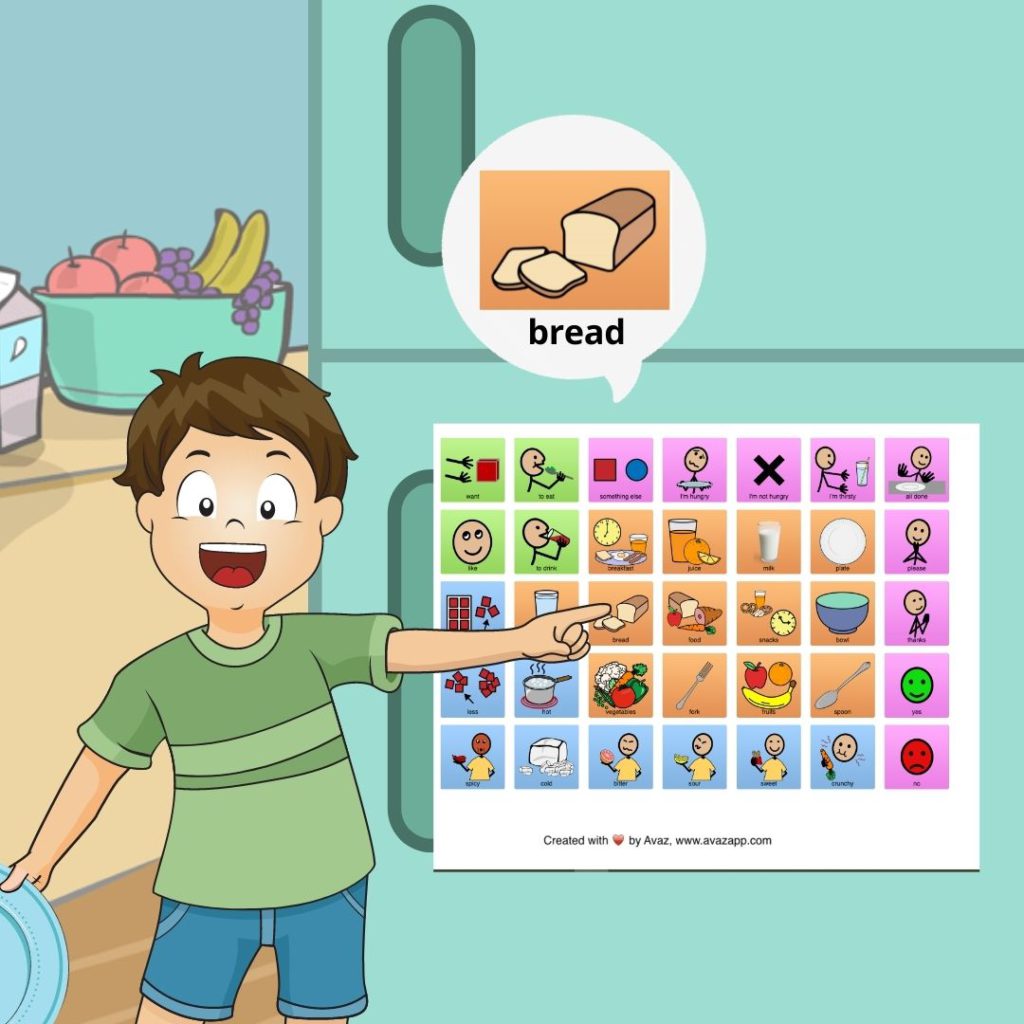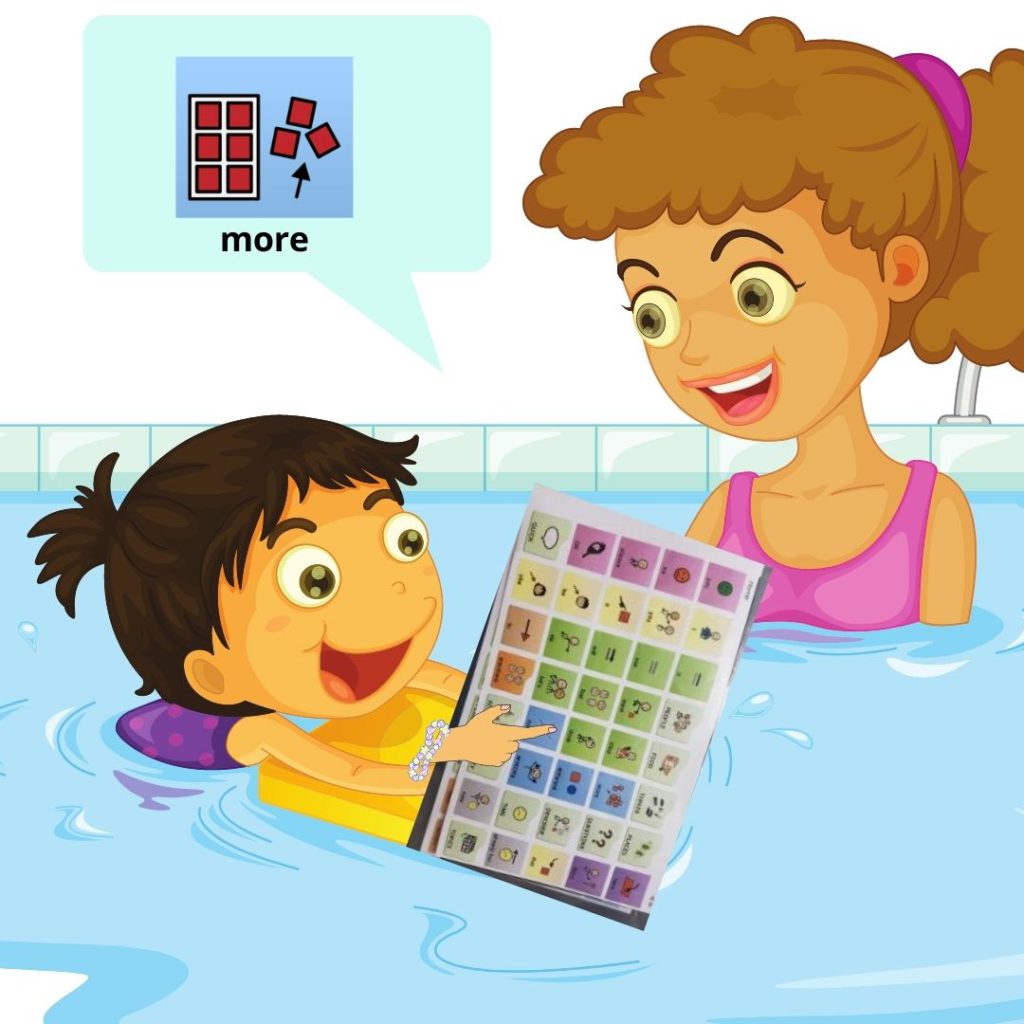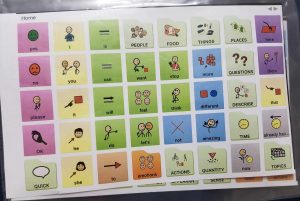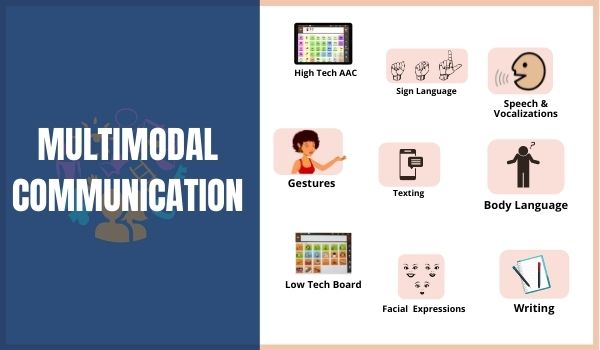With high tech AAC systems, the possibilities are truly endless when it comes to providing a voice to those with communication deficits. From remote therapy (teletherapy) to literacy supports, high tech AAC seems to have it all. It makes you wonder if low tech AAC devices are still relevant and useful for children with communication challenges.
What is Low Tech AAC?
Augmentative and alternative communication (AAC) is a term referring to all communication other than natural speech. Low-Tech AAC comprises tools and strategies that do not involve electronics and do not require batteries. Examples of Low-tech AAC are PECS (Picture Exchange Communication System), symbol charts, communication boards, communication books, etc.
Get free communication boards for food, emotions, and shared reading here
The user selects letters, words, or phrases from the communication charts to convey their message. Users can use a body part such as their finger or toe, a head pointer, eye gaze, mouth stick, light pointer, or a hand-held pointer for the selection.
High-tech AAC comprises tools and strategies that use electricity, electronics, and batteries.
Low-tech AAC in the kitchen


Food is a great motivator for emergent communicators. So, having a food communication board on the refrigerator makes it easier to get them to request using AAC. You can then gradually build on their communication attempts and expand using high tech AAC systems.
Low-Tech AAC in the Swimming Pool


A communicator’s favourite activity is a great opportunity for communication and language learning. More importantly, all individuals must have access to communication at all times. Since using high tech AAC devices in pools may not be feasible, laminated communication boards can serve as a means to communicate.
Low-Tech Vs High-Tech AAC
Most high tech systems are compatible with social media and messaging platforms which allows more learner engagement. They also facilitate communication autonomy by giving the user a wide choice of vocabulary that supports a variety of communicative functions.
More importantly, high tech AAC devices support SNUG (Spontaneous Novel Utterance Generation) which allows an individual to say whatever they want to, whenever they want to.
A robust AAC system also supports the language development and literacy acquisition of a communicator in addition to building communication.
Why a Multi-Pronged Approach Might be the Right Formula
Communication is complex and we constantly use several modes of communication to get our message across to others. We use facial expressions, gestures, and body language in addition to our speech to communicate. Similarly, people with communication challenges could potentially use multimodal communication to convey their messages.
Taking away their means to communicate can leave people feeling helpless and frustrated. So, users must be encouraged to choose multiple modes of communication. When used in conjunction with high tech systems, low tech AAC devices can be a powerful communication solution for people with complex communication needs.
Low-tech AAC (Augmentative and Alternative Communication), including laminated communication charts, is useful in demanding environments like pools and beaches. You can also use low tech AAC as a backup communication mode in case the high tech AAC systems run out of charge, or are not functional. You can take a printout of your child’s vocabulary and keep it in your bag or car for quick accessibility.
High Tech to Low Tech is Easy Peasy in Avaz
No need to take screenshot after screenshot and scroll through pages to print your vocabulary with Avaz AAC app. Getting a light tech communication board of an AAC learner’s vocabulary is simply effortless. Check out how!
Get free downloadable resources for AAC Learning here
References:
https://aacbooks.net/books/UsingLowTechSymbolSystemsChildren/
https://ussaac.org/aac-info/aac-devices/
https://en.wikipedia.org/wiki/Augmentative and alternative communication




